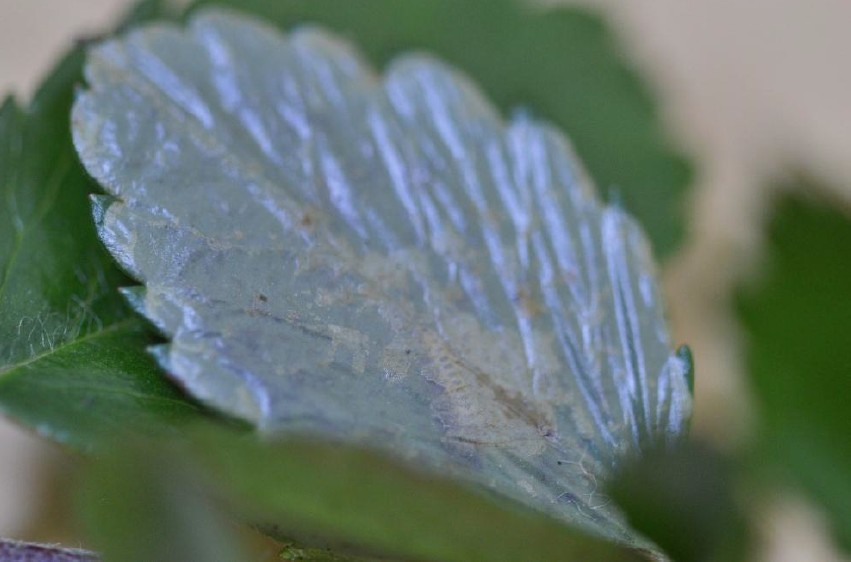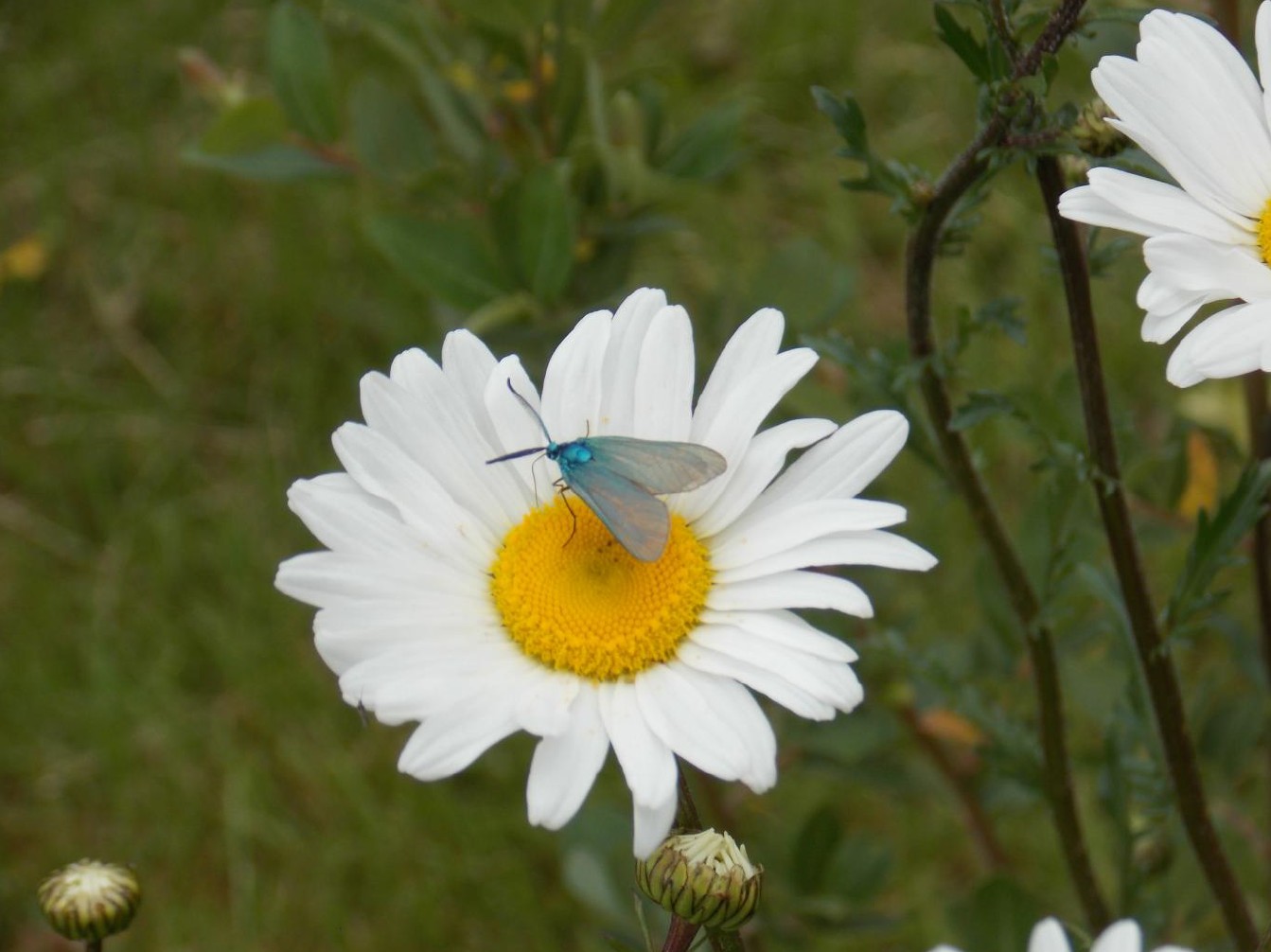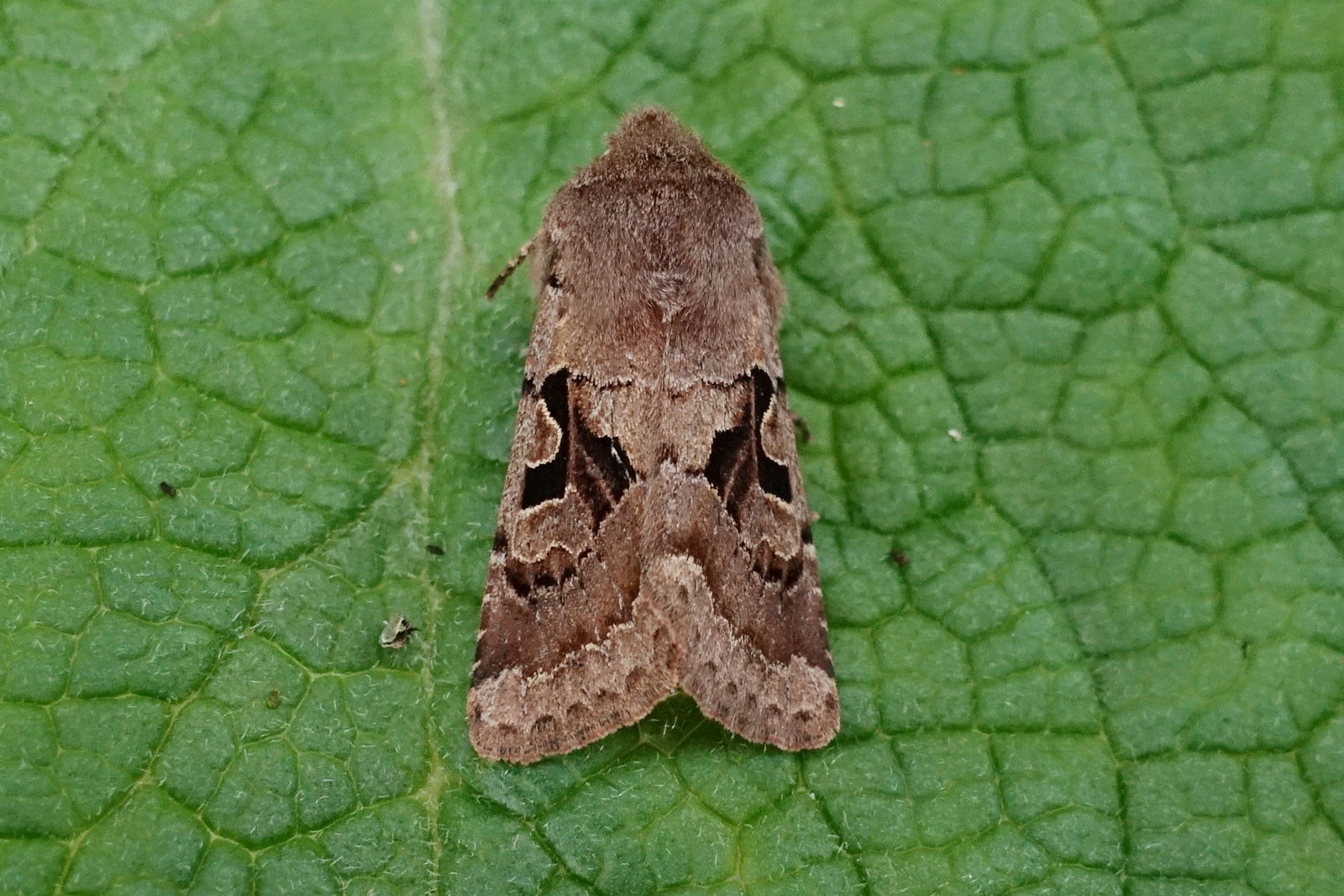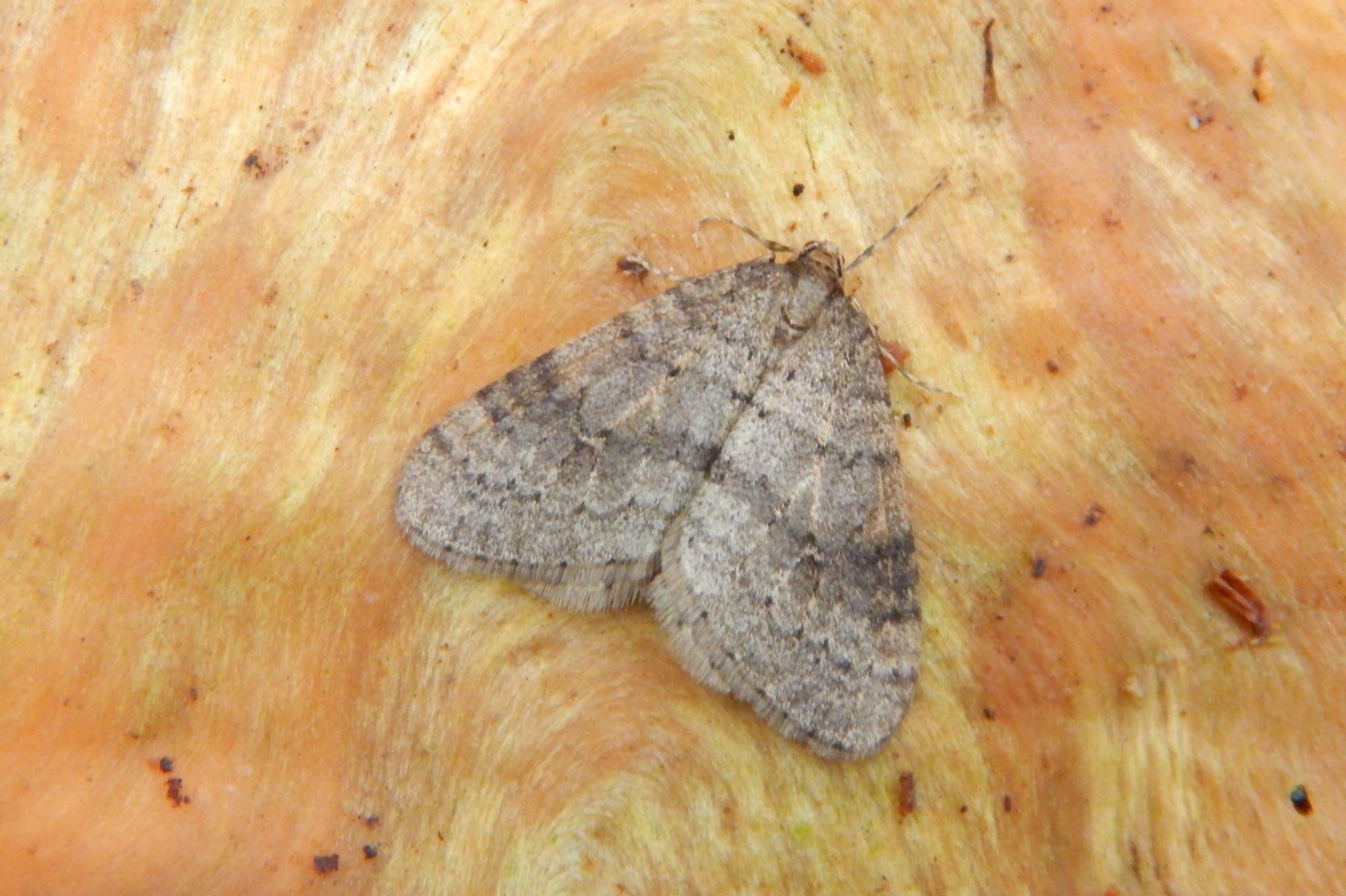Here is another micro moth which can be seen at this time of year, not as the splendidly marked adult shown here but in the leaf mines on the leaves of the very commonly planted hedge plant Firethorn or Pyracantha coccinea. This thorny evergreen plant, known for its abundant bunches of yellowy red berries, is native to Europe but was introduced into England at the end of the 18th century. Since then it has been widely planted in towns especially in the west and is quite common in the Central Belt and other parts of Scotland. It appears to be not so universal in D&G although plants of it are in every garden centre.
At this time of year the upper surface of the leaves often have the mines of the Firethorn Leaf Miner moth and can easily be recognised as the larva feeds below the cuticle leaving it as a thin grey film over the leaf (see below).
If this cuticle is peeled away the caterpillar can be seen amongst its droppings and can be identified from its characteristic shape and markings as shown below.
More details of this moth and further photographs of the mines can be seen on the Butterfly Conservation web-site.
This moth was first discovered in Essex in 1989 and has spread rapidly northwards. It reached D&G in 2007 at Moffat but strangely there are only 6 previous records of this species. This recent record comes from a bush in a garden near Dumfries. It is one of 27 species of Phyllonorycter found here most of which look quite similar as adults but are generally found mining in the leaves of a wide range of trees and woody plants.
Why not check your own Firethorn hedge or the one in the local park to see if any of these mines are there? It is clearly a very successful species which has followed its food plant to at least Inverness and has been recorded from all three of our Vice Counties. Perhaps we can add some more records before the light traps begin to be used again!






